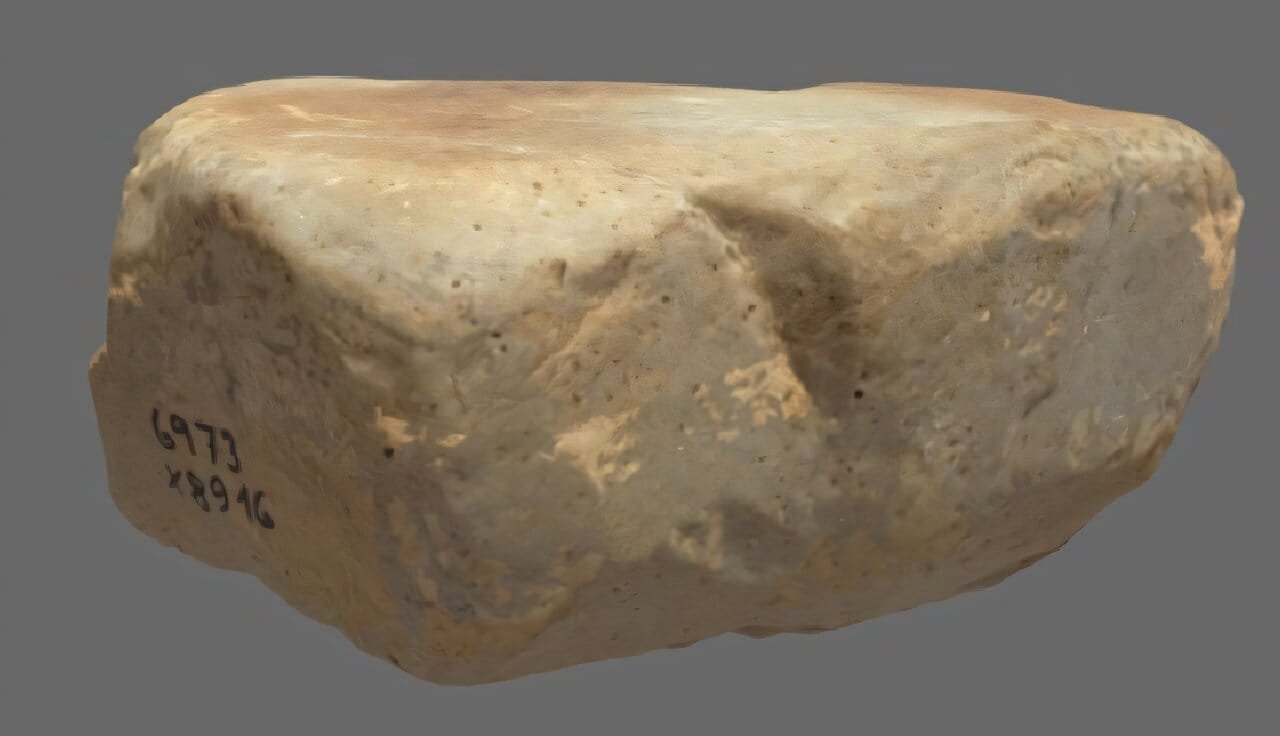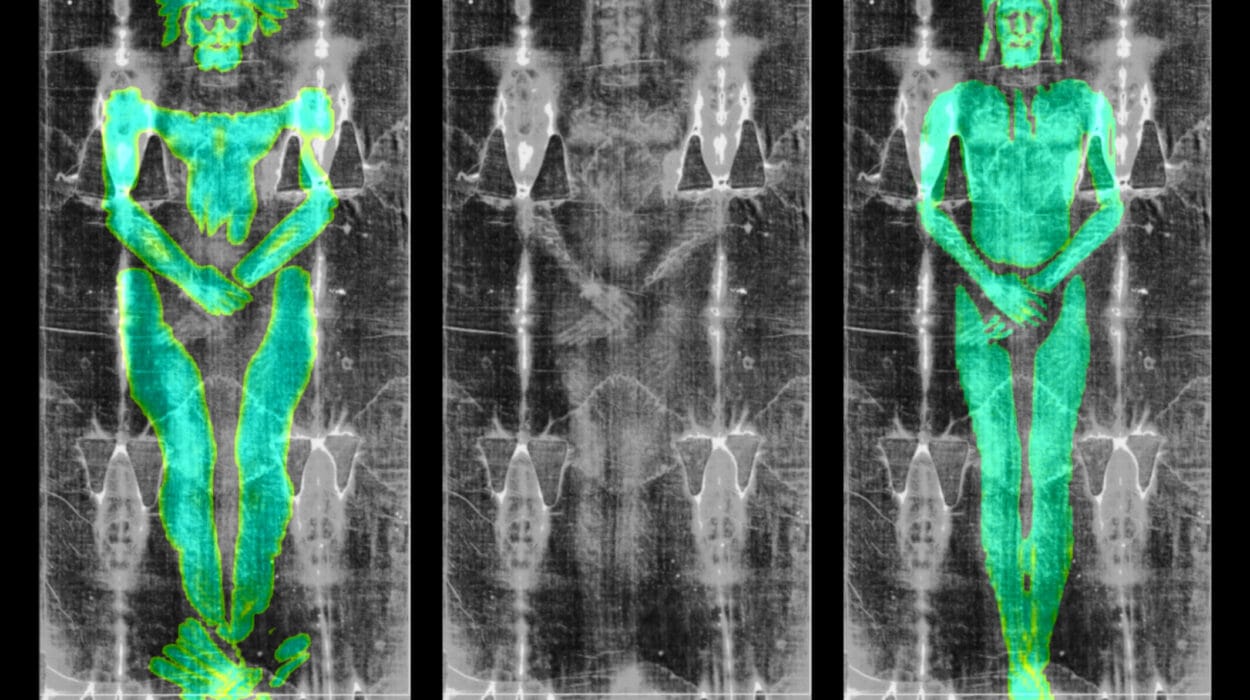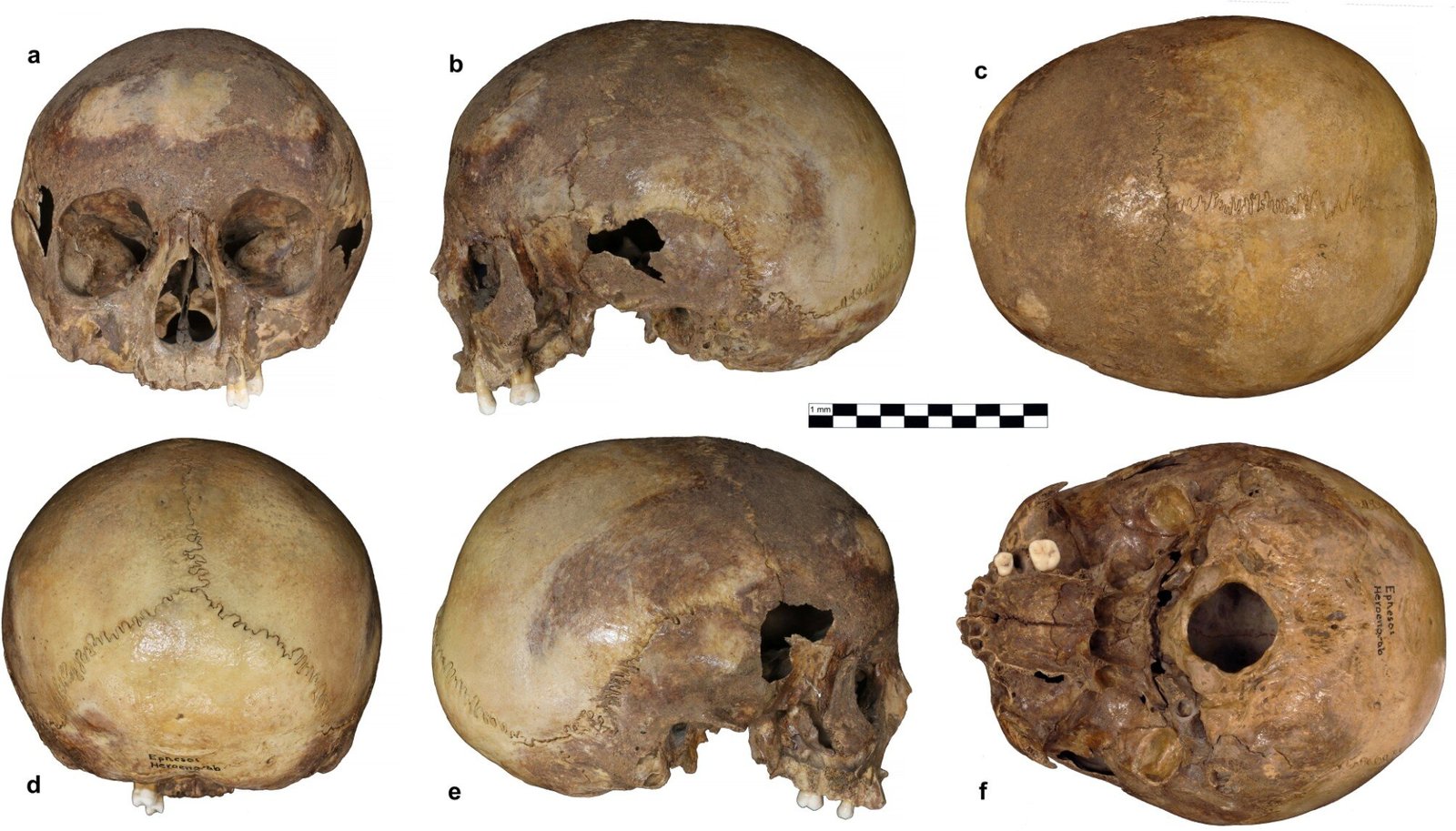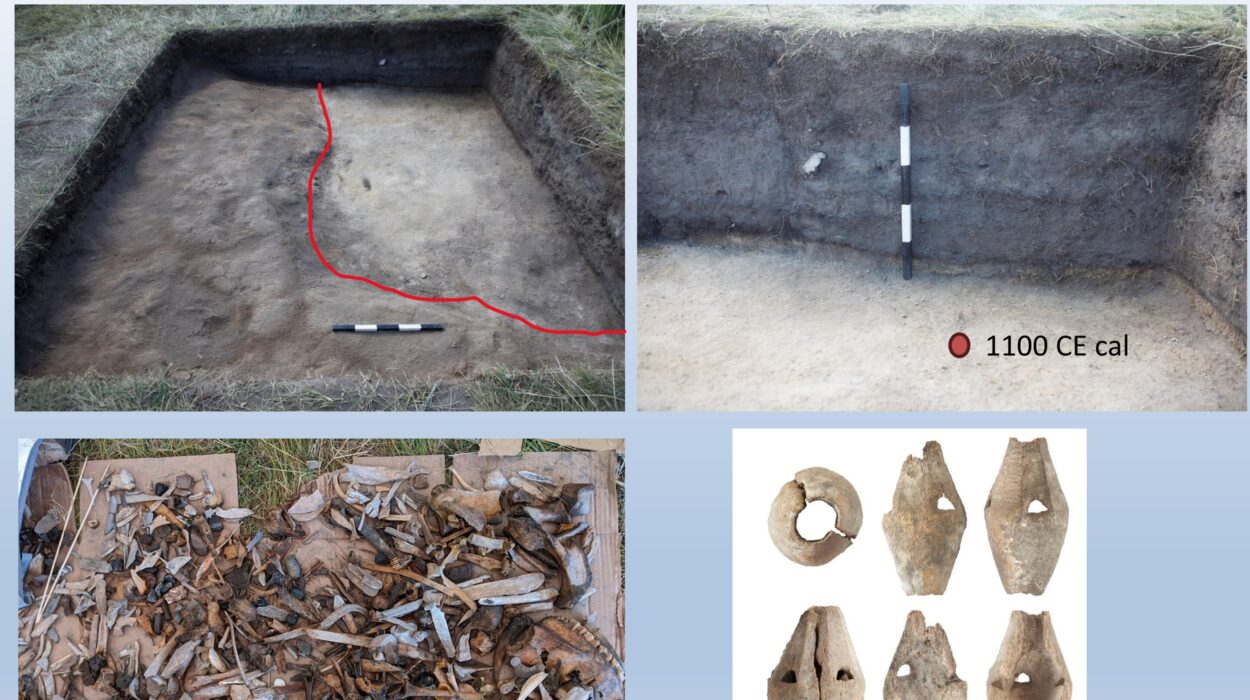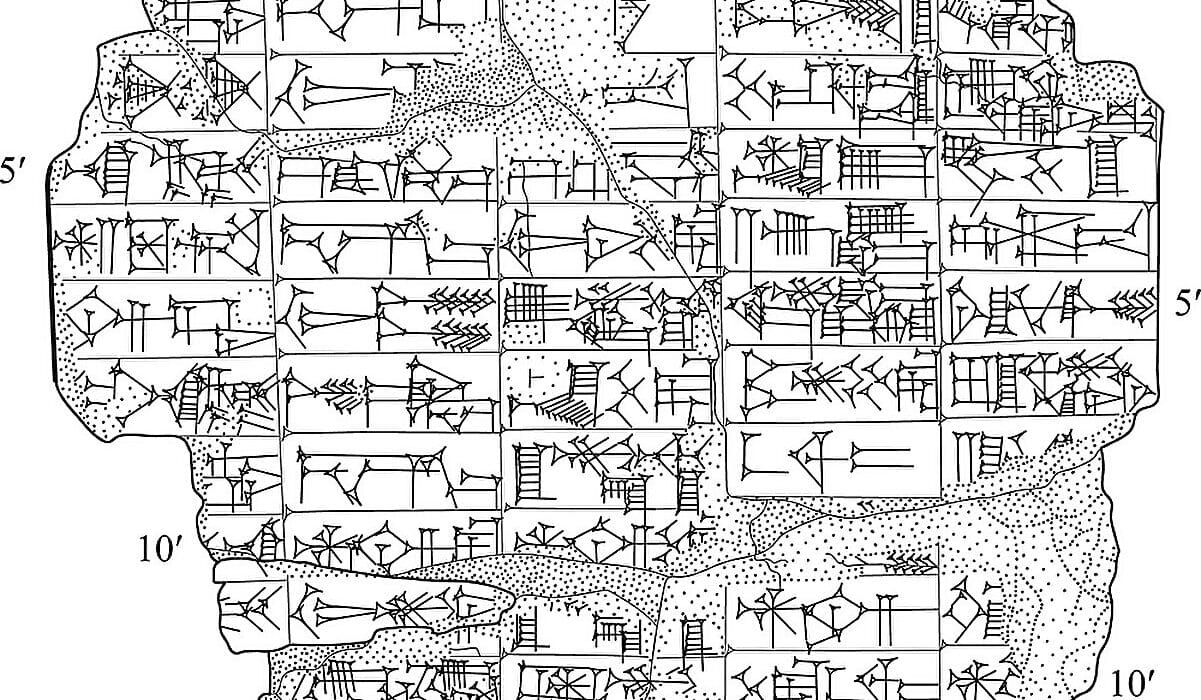In a fascinating discovery at a Neolithic settlement on the Danish island of Funen, archaeologists uncovered grinding stones and grains from early cereals, offering a glimpse into the daily life of our distant ancestors. Dating back 5,500 years to the Early Neolithic period, the settlement, identified as part of the Funnel Beaker Culture, raised an intriguing question about the early practices of food preparation. While the discovery of grinding stones and grains might suggest the early inhabitants ground cereals into flour for baking bread, new research has overturned this assumption. Instead, it appears that these ancient people prepared porridge or gruel from their grains, not bread.
The site at Frydenlund, located on Strandby Mark southeast of Haarby on Funen, yielded a wealth of archaeological finds, including fourteen grinding stones and over 5,000 charred grain kernels. Among the grains discovered were naked barley, emmer wheat, and durum wheat, which were cultivated by these early farmers. At first glance, it might seem logical to assume that the grinding stones were used for milling these grains into flour, much as we do today to make bread. However, a detailed analysis conducted by an international team of researchers revealed a different story.
The grinding stones found at the site are large, flat stones, with surfaces that allow for grinding when rubbed against another stone, a method that was common in prehistoric times for processing grains. The research team, led by archaeobotanist Dr. Welmoed Out from Moesgaard Museum, set out to analyze these stones and grains in detail. They used a combination of cutting-edge methods, including phytolith and starch grain analysis, to examine the surfaces of the grinding stones.
Phytoliths are microscopic mineral remains of plants that can be found on tools, while starch grains are the microscopic remnants of plant starch that remain when a plant is processed. Upon examination, the team found surprising results: there were no significant traces of cereal grains on the grinding stones. In fact, only a few phytoliths were found, and the starch grains identified on the stones did not originate from the cereals discovered at the settlement. Rather, they came from wild plants, not cultivated grains. This led the researchers to conclude that the grinding stones were not used for grinding cereals into flour.
The absence of cereal remains on the grinding stones was a striking finding, as previous interpretations of such tools often assumed they were used for milling grains for bread-making. However, the results of this study provide new insight into the dietary habits of the Funnel Beaker Culture. Instead of grinding cereals into flour, it is now believed that these early farmers used their grains to prepare porridge or gruel, a simpler and more liquid-based food. This aligns with other findings from similar Neolithic sites in Northern Europe, where evidence of grains cooked in water, rather than baked into bread, has been uncovered.

The grinding stones themselves offered some clues about their use. Unlike later querns, which show clear wear marks from the pushing motions used to grind grain, these stones exhibited no such signs. Instead, they appeared to have been struck with pestles, stone tools that resemble thick, rounded sausages. These pestles were used to crush the grains in a mortar-like fashion, suggesting that the grinding stones were employed more for crushing or mashing the grains than for grinding them into flour.
The study, which was published in the journal Vegetation History and Archaeobotany, represents the first time a state-of-the-art combination of phytolith and starch analysis has been applied to grinding stones from the first farmers of Northern Europe. The findings support the hypothesis that early agricultural societies did not rely heavily on bread-making but instead consumed grains in a more liquid form, such as porridge or gruel, often mixed with other gathered food sources like berries, nuts, roots, and meat.
Interestingly, the discovery also raises questions about the role of beer in early farming societies. While no definitive traces of beer brewing have been found in Denmark before the Bronze Age, the study suggests that early Neolithic diets were likely based on more basic and practical food preparation methods. This challenges the romanticized idea of ancient societies feasting on bread and beer and instead paints a picture of early Neolithic people subsisting on simpler, more utilitarian meals that were easier to prepare with the limited tools and resources available.

The research team acknowledges that their findings are based on a single settlement on Funen, and while the results align with other discoveries from the Funnel Beaker Culture, they caution that more studies are needed to fully understand the dietary habits of early Neolithic societies. It is possible that other settlements may have had different practices or used grinding stones in alternative ways. The team hopes that applying the same analytical techniques to other archaeological sites will provide further insights into how early farmers prepared their food.
The Funnel Beaker Culture, which flourished between 4000 and 2800 BCE, represents a key period in the history of agriculture in Northern Europe. It marks the transition from a hunter-gatherer lifestyle to settled farming communities that cultivated crops, raised livestock, and began to build permanent dwellings. The culture is named after the distinctive funnel-shaped beakers that have been found at numerous archaeological sites across Scandinavia, along with other characteristic pottery and tools.
The settlement at Frydenlund on Funen is one of the most significant sites from the Funnel Beaker Culture in Denmark, and this new research adds to our understanding of the ways in which these early farmers lived and ate. The discovery of grinding stones, grains, and pestles at the site offers a glimpse into the food preparation practices of Neolithic people, challenging long-held assumptions about their diet and shedding light on the complexity of early agricultural societies.
The collaboration between Moesgaard Museum, Aarhus University in Denmark, Kiel University in Germany, and the Spanish National Research Council (IMF-CSIC) in Barcelona was instrumental in conducting this groundbreaking research. Their combined expertise in archaeology, archaeology botany, and analytical techniques allowed for a deeper exploration of the ways in which early farming communities interacted with their environment and how they adapted to the changing conditions of the Neolithic period.
Reference: Welmoed A. Out et al, Plant use at Funnel Beaker sites: combined macro- and microremains analysis at the Early Neolithic site of Frydenlund, Denmark (ca. 3600 bce), Vegetation History and Archaeobotany (2024). DOI: 10.1007/s00334-024-01020-9
